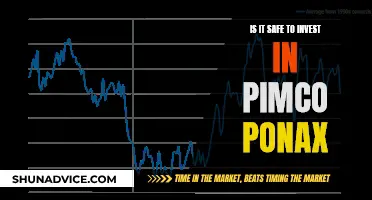
A savings and investment plan in a workplace is a benefit that employers offer to their employees. It is a tax-advantaged investment plan that enables employees to set aside a portion of their pre-tax wages for retirement savings or other long-term goals, such as paying for college tuition or purchasing a home. These plans are designed to encourage employees to save for their future and are becoming increasingly popular as a way to attract and retain top talent.
What You'll Learn

Employee Savings Plan (ESP)
An Employee Savings Plan (ESP) is a savings plan offered by employers to help their staff save for retirement and other long-term goals. ESPs are tax-advantaged investment plans, allowing employees to set aside a portion of their pre-tax wages for retirement or other financial goals, such as buying a home or paying for college tuition.
Employees decide how much they want to contribute each month, and this amount is deducted from their paycheck. These deductions are made before income tax is assessed, allowing employees to save money while paying taxes on a smaller portion of their salary. ESPs often include employer-matching contributions, where the employer matches the employee's contributions up to a certain dollar amount or percentage.
One of the most popular ESPs in the US is the 401(k) retirement plan, which offers four types of plans. Other types of ESPs include Health Savings Accounts (HSAs) and profit-sharing plans.
Employees have control over how their money is invested, choosing from the investment options provided by the employer. It is important to note that ESPs may have restrictions on withdrawals or impose fees for early withdrawals, so employees should understand the details of their plan before participating.
ESPs offer a simplified saving process and can be an effective way to boost retirement savings while also providing tax benefits. They are becoming an increasingly important benefit offered by employers to attract and retain top talent.
Investing Life Savings: Strategies for Long-Term Financial Growth
You may want to see also

Health Savings Account (HSA)
A Health Savings Account (HSA) is a savings and investment plan that can be offered as part of an employee savings plan (ESP). HSAs are tax-advantaged accounts that allow individuals with high-deductible health plans (HDHPs) to save for medical expenses that are not covered by their insurance.
Individuals or their employers can make contributions to an HSA, which are limited to a maximum amount each year. Contributions are made from pre-tax dollars, and the money can be used to pay for qualified medical, dental, vision, and prescription drug expenses. HSA funds generally cannot be used to pay premiums, but there are some exceptions, such as Medicare premiums or healthcare continuation coverage while receiving unemployment compensation.
HSAs have several tax advantages. Contributions are not taxed, and the money can be invested and grown tax-free. Additionally, withdrawals are not taxed as long as they are used for qualified medical expenses. HSAs also offer flexibility, as they are owned by the employee and can be rolled over from year to year, even if the employee changes jobs or retires.
To be eligible for an HSA, an individual must have an HDHP, have no other health coverage, not be enrolled in Medicare, and not be claimed as a dependent on someone else's tax return. Self-employed and unemployed individuals may also contribute to an HSA if they meet the eligibility requirements.
The maximum contribution limits for HSAs vary by year and are typically higher for families than for individuals. For example, in 2024, the maximum contribution for an individual is $4,150, while the limit for a family is $8,300. Individuals aged 55 or older can make additional catch-up contributions of up to $1,000.
HSAs can be a great way for employees to save for medical expenses and take advantage of tax benefits. However, it is important to consider the potential drawbacks, such as the requirement to have a high-deductible plan and the need to have sufficient funds to cover the high deductibles.
ETFs: Smart Short-Term Investment Strategy for Savings?
You may want to see also

Profit-sharing plans
A profit-sharing plan is a pension or retirement plan where employees receive a share of the company's profits. This type of plan is also referred to as a deferred profit-sharing plan (DPSP). The amount received by employees depends on the company's annual or quarterly earnings.
Unlike other retirement plans, such as the Employees' Provident Fund (EPF) and National Pension System (NPS), profit-sharing plans receive contributions directly from the employer. The company decides how much to allot to each employee and whether to make any contributions in a given year. If the employer chooses to make a contribution, they must use a defined formula to determine how much each employee receives.
The most popular method for calculating profit-sharing allocations is the comp-to-comp strategy, where the company first determines the overall compensation of its employees and then calculates the individual compensation and profits for each employee.
Employees can receive their share of profits in the form of cash or company stock, often contributed to a qualified tax-deferred retirement account. These accounts allow penalty-free distributions after the age of 59 1/2. Some plans offer both deferred benefits and cash, providing a combination of retirement contributions and a yearly bonus.
Investment Options for College Savings: What Are Your Choices?
You may want to see also

Defined-contribution plans
A defined-contribution plan is a retirement plan in which the employee, the employer, or both make regular contributions of fixed amounts or percentages of the employee's paycheck. This type of plan does not promise a specific amount of benefit at retirement. Instead, the employee will receive the balance in their account, which is based on contributions plus or minus investment gains or losses. The value of the account will fluctuate due to changes in the value of the investments.
Examples of defined-contribution plans include 401(k) plans, 403(b) plans, employee stock ownership plans, and profit-sharing plans. In a 401(k) plan, employees can elect to defer receiving a portion of their salary, which is instead contributed on their behalf before taxes. Sometimes, the employer may match these contributions. There is a dollar limit on the amount an employee can elect to defer each year, and the employer must advise employees of any limits that may apply. Employees who participate in 401(k) plans take on the responsibility for their retirement income by contributing part of their salary and, often, by directing their own investments.
A defined-contribution plan is funded primarily by the employee, who defers a portion of their gross salary. The company may choose to match the contribution up to a limit it sets. The employee is responsible for making contributions and choosing investments offered by the plan. These contributions are typically invested in select mutual funds, which contain a basket of stocks and/or other securities, and money market funds. However, the investment menu can also include annuities and individual stocks.
The investments in a defined-contribution plan grow tax-deferred until funds are withdrawn in retirement. There is a limit to how much employees can contribute each year. For example, the limit on employee contributions to a 401(k) in 2023 is $22,500. Those over 50 can contribute up to $30,000 with the $7,500 catch-up contribution. In 2024, the standard limit is $23,000, meaning those over 50 can contribute up to $30,500.
Another type of defined-contribution plan is a 403(b) plan. While both the 403(b) and 401(k) are tax-deferred, a 403(b) is much less common as it is restricted to those in non-profit, charitable organizations, and public schools and colleges. 403(b) plans are often managed by insurance companies and offer fewer investment options compared to a 401(k), which is often managed by a mutual fund.
Saving and Investing: Biblical Principles for Financial Wisdom
You may want to see also

Defined benefits plan
A defined-benefit plan is an employer-sponsored retirement plan where employee benefits are computed using a fixed formula that considers factors such as length of employment and salary history. Employees are usually required to work for a specific amount of time before becoming eligible to participate in the plan and there may be a waiting period after breaks in service.
The company is responsible for managing the plan's investments and risks and will often hire an outside investment manager to oversee the plan. Employees cannot simply withdraw funds as with a 401(k) plan. Instead, they become eligible to take their benefit as a fixed monthly payment like an annuity, or in some cases, as a lump sum at an age defined by the plan's rules.
Pensions are an example of defined-benefit plans. This type of plan is called "defined benefit" because employees and employers know the formula for calculating retirement benefits ahead of time and they use it to define and set the benefit payout. This is in contrast to other retirement funds, like retirement savings accounts, where the payout amounts depend on investment returns.
Since the employer is responsible for making investment decisions and managing the plan's investments, they assume all the investment and planning risks. Poor investment returns or faulty assumptions and calculations can result in a funding shortfall, in which case, employers are legally obligated to make up the difference with a cash contribution.
Defined-benefit plans provide eligible employees with guaranteed income for life when they retire. Employers guarantee a specific retirement benefit amount for each participant based on factors such as the employee's salary and years of service. Employees have little control over the funds until they are received in retirement. The company takes responsibility for the investment and distribution to the retiree, meaning the employer bears the risk that the returns on the investment will not cover the defined benefit amount.
Loans: Saving or Investing? Understanding the Financial Impact
You may want to see also
Frequently asked questions
An employee savings plan (ESP) is a savings and investment plan provided by an employer that allows employees to set aside a portion of their pre-tax wages for retirement or other long-term goals. ESPs are designed to help employees save towards their future and are a common benefit offered by businesses to attract and retain talent.
There are several types of employee savings plans, including:
- Qualified defined contribution plans (offered by private companies as 401(k) plans, and by public/non-profit organisations as 403(b) or 457(b) plans)
- Health savings accounts (HSAs)
- Profit-sharing plans
- Defined benefits plans (also known as pension plans)
Employee savings plans offer a number of advantages, including:
- Tax benefits: Contributions are typically made on a pre-tax basis, reducing taxable income.
- Simplified saving: Automated deductions from paychecks can make it easier for employees to save.
- Employer matching: Some employers offer to match employee contributions up to a certain limit, boosting savings.
- Higher annual contribution limits compared to individual retirement accounts (IRAs).
There are a few potential disadvantages to employee savings plans, such as:
- Vesting requirements: Some employers require employees to work for a minimum period before they can access matched funds.
- Tax on withdrawals: While contributions are tax-free, taxes are typically payable on withdrawals.
- Early withdrawal penalties: Withdrawing funds early from some plans, such as a 401(k), may incur a penalty.
- Investment risk: Plan contributions are subject to investment risk and may not perform as expected.
- Administrative fees: These plans may come with fees that impact overall returns.







